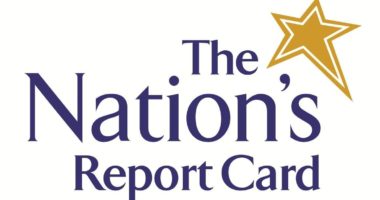States can close the achievement gap by decade’s end, New Education Trust state and national achievement gap analysis
(Washington, D.C.) A new analysis by The Education Trust reveals that achievement gaps in many states would shrink dramatically and in some cases disappear entirely if poor and minority students in those states reached the same levels of academic achievement as do their counterparts in top-performing “frontier states.”
For example:
- The White-African American gap in 8th grade writing would disappear entirely in seven states (Louisiana, Mississippi, Missouri, Utah, West Virginia, Arkansas, and Hawaii) if African American students in those states wrote as well as African American 8th graders in Texas do.
- The White-Latino gap in 8th grade math in California would shrink by two-thirds if Californias Latino 8th graders performed as well in math as Latinos in Iowa do.
- The White-African American gap in 8th grade science in New York would be cut in half if New Yorks African American 8th graders performed as well in science as African American 8th graders in Colorado.
This analysis, part of the new on-line Education Watch report and interactive Web site, compares each states scores on the National Assessment of Educational Progress (NAEP) with achievement in top-scoring statesdubbed “frontier states”for poor and minority students.
“This analysis of NAEP results deals another sharp blow to the deeply damaging notion that student achievement is influenced more by race and income than by what schools do,” said Kati Haycock, director of The Education Trust. “If race and income mattered more than school policy and practice, NAEP scores for minority and poor kids would be pretty much the same from state to state. But theyre not. Indeed, theres wide variation. This demonstrates clearly that what we doand dont doin schools matters, and it matters a lot.”
The report also finds that achievement gaps would narrow substantially nationwide if poor and minority students performed as well nationally as they do in frontier states. For example:
- The national reading gap between poor and non-poor 4th graders would be cut by two-thirds if poor students everywhere read as well as they do in Maine.
“By applying lessons from high-performing states we can turn the nations shameful achievement gap into a historical footnote by the end of this decade,” Haycock continued.
These gaps have real implications for students. By the time they reach 8th grade, poor and minority students nationally are about three years behind other students. By the time they reach 12th grade, those students are 4 years behind. Indeed, 17-year-old African American and Latino students have skills in English, math, and science similar to those of 13-year-old Whites.
But some states have much smaller gaps between groups. The gap between White and Latino 8th graders in science performance, for example, ranges from 19 points in Indiana and Montana to 47 points in Tennessee. That puts Latino students about two years behind Whites in Indiana and Montana, compared with an almost five year gap in Tennessee.
The interactive Web site also provides state by state data on each NAEP assessment administered during the 1990s. From this data the report concludes that had achievement for poor and minority students increased nationally at the same rate that it did in the states in which minority and poor students made the greatest gains, the national achievement gaps would have shrunk substantially instead of grown over the past decade.
However, the report cautions that raising the performance of poor and minority students to the same level as in frontier states is not enough. Many frontier states still have big achievement gaps between groups of students. Connecticut, for example, which has the highest average performance of African American 4th graders on the NAEP reading test, also has one of the largest gaps between White and African American students on that test.
On the other hand, Virginia, which has the smallest gap between White and Latino 8th graders on the NAEP writing test, also has the highest average score for Latino students on that test and the fifth-highest score for White students. The pattern is much the same for poor and non-poor 8th graders on the NAEP science test. North Dakota, which has the smallest gap between poor and non-poor students, also has the highest average score for poor students on that test and the third-highest score for non-poor students.
“All states would do well to take a lesson from Virginia and North Dakota on this,” said Haycock. “Closing gaps while simultaneously getting higher achievement for all groups of students is not only possible, it is a necessity. Its happening. And its happening right here right now.”
In addition to its exhaustive analysis of student achievement data, the new Education Watch report also provides data on dozens of state-by-state indicators related to equity in educational attainment and school quality. Those data reveal that in many states and nationwide, education systems give poor and minority students less of everything that matters for classroom learning: challenging courses; effective instruction from qualified teachers; and adequate dollars and classroom resources. New data, included in Education Watch for the first time, illustrate these devastating inequities:
- Across the nation and in 42 states, school districts with the highest numbers of poor children have fewer dollars to spend than do districts with the fewest poor children. The national gap is $1,139. That translates into a difference of over $450,000 for a typical elementary school of 400 students.
- Nationally, compared with White 8th graders, African American students are twice as likely to have a science teacher who does NOT focus on teaching high-level skills, such as data analysis or hands-on laboratory work.
“These data make both the problems and the solutions crystal clear,” said Haycock. “We know what works: rigorous courses, high quality instruction and demanding standards. We can no longer tolerate high failure rates for poor and minority students. Nor do we have to. We dont need to sit around wringing our hands and wishing for answers. Its a matter of political will, not education know-how. The real questionthe only questionis do we as a nation have the political will to overturn, once and for all, inequitable practices that give poor and minority students less of everything that matters.”
The report has three parts:
- A groundbreaking, Interactive State and National Data Site that allows users to compare states on achievement gaps, achievement levels, and a wide range of indicators related to equity in student achievement, educational attainment, and opportunities for learning (SITE REQUIRES INTERNET EXPLORER Doesnt work with Netscape);
- State Summary Reports with state specific charts and tables on each indicator, including a unique snapshot analysis of how much gaps in each state would close if students performed at the frontier; and
- New Frontiers for a New Century, a national overview of the data, including a detailed description of lessons for educators and policymakers who want to close achievement gaps while raising student performance for all groups.
“We are terribly excited about this new package of tools. It is our hope that it arms policy makers, parents and the public more generally with the information that they need to make the case for better schools and higher achievement for all studentsbut especially for those students who have suffered the most from half-hearted efforts. We must set aside all of the old bargains, the old politeness and the destructive and pervasive myths about who can and cannot achieve, and do what it takes to make needed changes before weve bargained away another generation of our childrens futures,” Haycock concluded.







